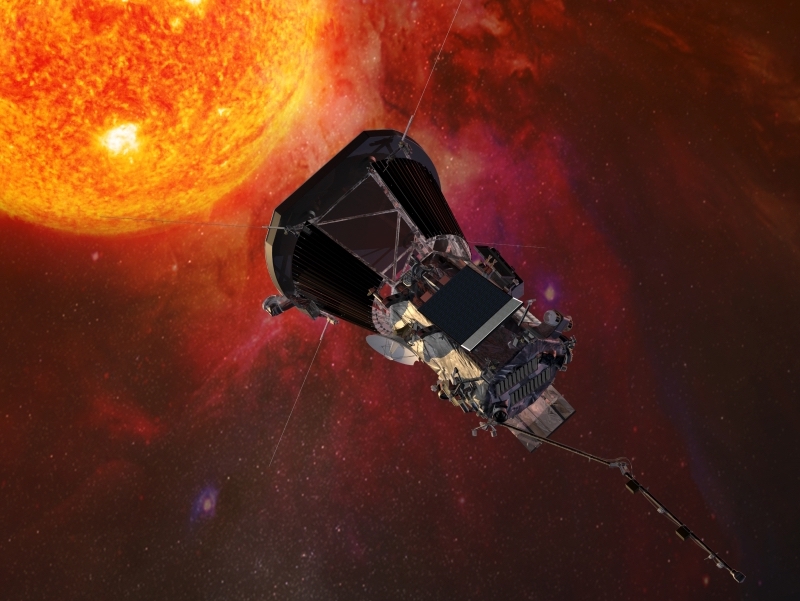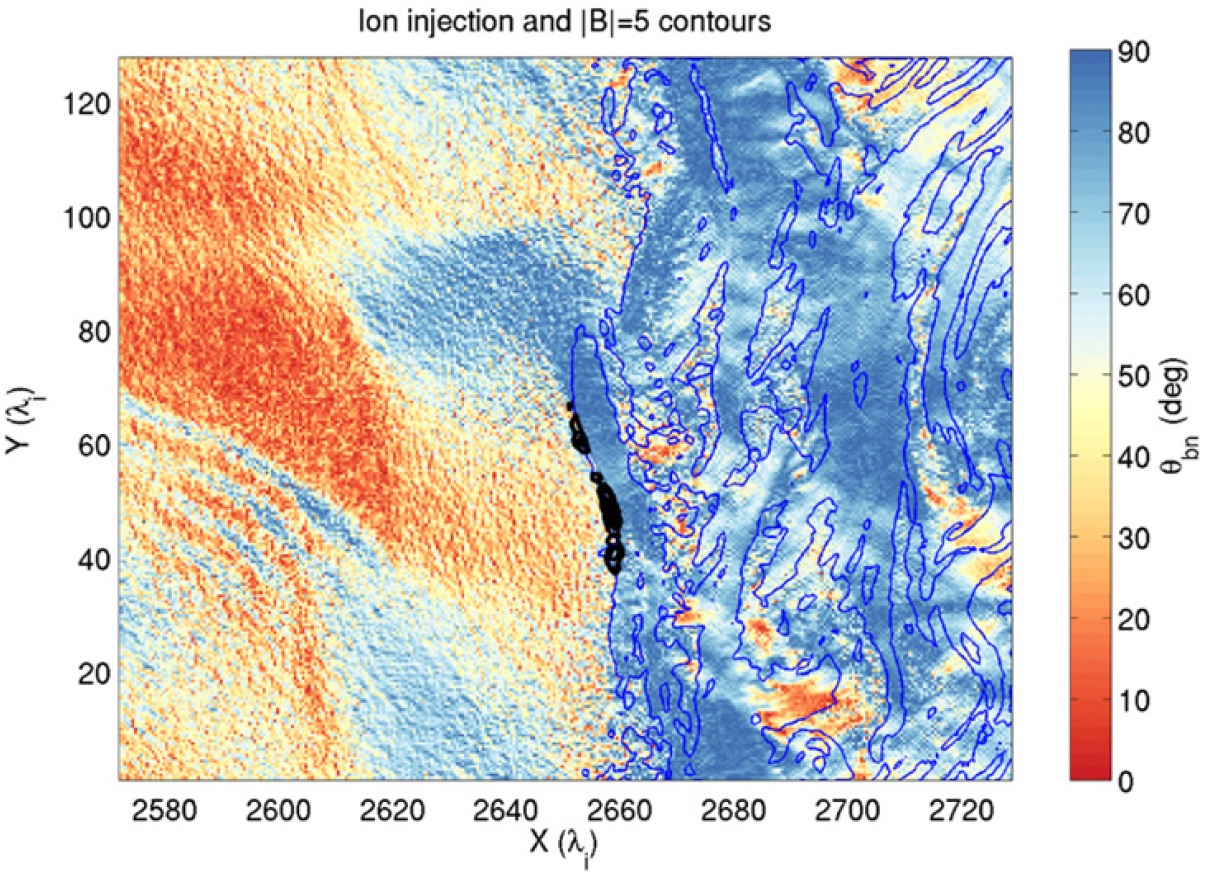Space Missions
 The Parker Solar Probe spacecraft. Image credit: NASA.
At Queen Mary we have involvement in several space missions:
The Parker Solar Probe spacecraft. Image credit: NASA.
At Queen Mary we have involvement in several space missions:- Parker Solar Probe (PSP). PSP is a NASA mission that was launched in August 2018 to explore the solar corona and solar wind. It will travel to within 9 solar radii of the Sun's surface, far closer than any other spacecraft have previously gone, and within the solar corona for the first time. The spacecraft will study the magnetic field structure, heating of the corona, origin of the solar wind, and how energetic particles are accelerated and transported throughout the heliosphere. This mission has been decades in the making, and promises ground-breaking scientific discoveries. At Queen Mary, we are team members of the FIELDS suite of instruments on PSP that will measure the electromagnetic fields in situ to study processes such as turbulence, magnetic structure, coronal heating, shocks, reconnection, particle acceleration, and solar radio emission.
- Magnetospheric Multiscale (MMS). MMS is a NASA multi-spacecraft mission that was launched in 2015 to study magnetic reconnection in and around the Earth's magnetosphere, as well as a broad set of related processes. The high resolution instrumentation on MMS allows us to probe and understand fundamental questions of plasma physics applicable to a variety of astrophysical systems. At Queen Mary, we are part of the MMS Science Working Team.
- Solar Orbiter (SolO). Solar Orbiter is an ESA mission that was launched in 2020 to study the connection between the Sun and the rest of the solar system, addressing one of the central questions of heliophysics: how does the Sun create and control the heliosphere? The spacecraft has a suite of in situ and remote instruments to study the Sun and solar wind, investigating the origin of the solar wind and solar magnetic field, heliospheric transients, energetic particles, and the solar dynamo. At Queen Mary, we are part of three instrument teams on Solar Orbiter.
- We have also been involved in the development of, and/or the analysis of data from, many other space missions including Helios, AMPTE, Ulysses, Cluster, Wind, and THEMIS/ARTEMIS.
Plasma Simulation
 Detail of part of simulation of a quasi-parallel shock (Sundberg et al. 2016, ApJ 820, 21).
We also have a long experience of using computer simulations to further our research in space and astrophysical plasma physics:
Detail of part of simulation of a quasi-parallel shock (Sundberg et al. 2016, ApJ 820, 21).
We also have a long experience of using computer simulations to further our research in space and astrophysical plasma physics:- Simulating space and astrophysical plasmas helps us to understand the workings of fundamental processes such as collisionless shocks, particle acceleration and turbulence. But simulations can also aid observations, providing new scenarios or filling in details of interpretation. For example, most space plasma observations are only single point, or may be from a few points in space. Using simulations, the data from individual points in space can be interpreted from a wider three-dimensional view.
- Large scale kinetic simulations. Most of our simulation work deals with the effects of kinetic plasma physics, where the dynamics of particles is important. We use large scale particle-in-cell (PIC) simulations wherein the plasma is modelled as a set of "simulation particles", with the electric and magnetic fields obtained by solving Maxwell's equations. These simulations might have over a billion particles and take days or weeks to run. The data produced can run to terabytes and its analysis is a complex task.
- Shocks, turbulence, reconnection and particle acceleration. Using large-scale simulations we are studying how shock waves heat and accelerate the plasma. We are studying turbulence in collisionless plasma in order to understand the role of reconnection as well as the mechanisms of the turbulent cascade in the kinetic regime. In all cases our simulations are motivated and guided by observations, so that the simulations help to better understand the variety of plasmas in the universe.
Research Topics
The areas of research we are involved in cover a variety of fundamental processes central to modern plasma physics that occur across the range of space and astrophysical systems:- Plasma turbulence
- Collisionless shocks
- Magnetic reconnection
- Energetic particle acceleration
- Plasma waves and instabilities
- Space weather
- Kinetic plasma physics
- Plasma radio emission